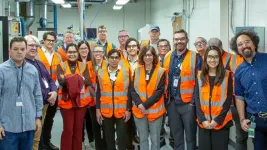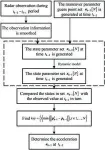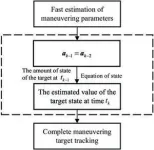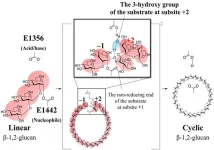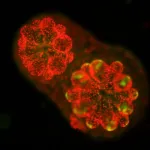(Press-News.org) More than 120 people gathered for the 2024 Innovation Network for Fusion Energy (INFUSE) Workshop at the U.S. Department of Energy’s (DOE) Princeton Plasma Physics Laboratory (PPPL) from Feb. 27-28.
The event, which was sponsored by the DOE’s Office of Fusion Energy Sciences (FES), is a part of the INFUSE awards program that funds laboratories or universities so they can partner with private sector companies working on the science and technology solutions that will bring fusion energy to the power grid. To date, the DOE has granted 90 awards, with most ranging from $100,000 to $350,000 for a 12-month project.
“The INFUSE program continues to help bring together the accumulated knowledge and expertise developed in national labs and universities with the private companies that want to reduce risks and drive their technologies forward,” said Erik Gilson, INFUSE deputy director and head of PPPL’s Discovery Plasma Science Department. “These types of public-private partnerships really bring out the best in each sector. I’m excited to see what new partnerships emerge as the result of people networking at the workshop.”
Developing a system for using fusion as a source of electricity is as important as it is complex.
Fusion could support our ever-growing need for energy without contributing to carbon emissions. But the challenge is arduous and multifaceted, as fusion requires new materials, engineering and software.
“I believe we are going to conquer this issue of making fusion cheap enough for the market, but it would sure be nice if it were soon,” said PPPL Lab Director Steven Cowley during his opening remarks at the workshop.
Cowley said he believes part of overcoming the challenges to bringing fusion energy to the power grid is embracing public-private partnerships and noted that, ultimately, it will be private industry that brings fusion to the market efficiently. “We are here to support you,” he told workshop attendees.
“The tone of the meeting was set based on what we heard from the respondents to a survey from a previous virtual workshop, which showed the greatest need was for networking opportunities,” said Arnie Lumsdaine, INFUSE director and group leader of fusion engineering at Oak Ridge National Laboratory. Consequently, technical sessions were kept to a minimum, with the bulk of the two-day program offering opportunities for private companies to learn more about what each national lab had to offer and discuss collaboration possibilities.
Scott Hsu, senior advisor and lead fusion coordinator in the Office of the Under Secretary for Science and Innovation at the DOE, explained the elements essential to realizing President Joe Biden’s “Bold Decadal Vision” for fusion energy. “We want to ensure that fusion is a leader in supporting a clean energy transition,” said Hsu. This, he explained, requires everything from closing the science and technology gaps to building a fusion pilot plant, establishing reliable supply chains –– especially for fusion fuels, developing a waste management strategy, instituting regulatory frameworks, and establishing external partnerships, including with state and local governments, nongovernmental organizations, academia and the private sector.
Fermi National Accelerator Laboratory (Fermilab) Scientist Maria Baldini was among the many representatives from the national labs. “This workshop offers me a good opportunity to meet people in the private sector,” Baldini said. “We are trying to develop a program to study the properties of a new kind of conductor under different engineering constraints that would be used for fusion machines, and it would be good for me to know the people in the private sector who produce this conductor and try to think about how we can collaborate.”
In addition to opportunities to network, the workshop offered a lengthy question-and-answer session with Fusion Industry Association Chief Executive Officer Andrew Holland, tours of PPPL, technical sessions, presentations about successful INFUSE projects and information about the Cooperative Research and Development Agreement (CRADA) process.
PPPL’s Strategic Partnership Officer David Zimmerman was one of the speakers providing advice on the CRADA process. “You can see from the number of applications that the INFUSE program generates and the number of grant awards that it makes that this program is really driving public-private partnerships,” said Zimmerman. “I think it’s a fantastic mechanism program to advertise laboratory capabilities to fusion companies and to give laboratories an opportunity to engage with this exciting new fusion industry.”
Aaron Froese, a computational plasma physicist at General Fusion in British Columbia, Canada, said the INFUSE awards have allowed the company to extend research critical to advancing their magnetized target fusion technology for commercialization. In a General Fusion commercial power plant, the company says a plasma liner made of liquid lithium will improve device longevity (by shielding structural components from fast fusion neutrons), increase the tritium breeding ratio and act as the medium to transfer the kinetic energy from the compression drivers, addressing the significant barriers to commercialization. General Fusion has worked with several U.S. national labs under INFUSE awards, including PPPL, Oak Ridge National Laboratory and Savannah River National Laboratory. “The administration has been very receptive to our endeavors,” Froese said. “I think it’s a very well-run program.”
PPPL is mastering the art of using plasma — the fourth state of matter — to solve some of the world's toughest science and technology challenges. Nestled on Princeton University’s Forrestal Campus in Plainsboro, New Jersey, our research ignites innovation in a range of applications including fusion energy, nanoscale fabrication, quantum materials and devices, and sustainability science. The University manages the Laboratory for the U.S. Department of Energy’s Office of Science, which is the nation’s single largest supporter of basic research in the physical sciences. Feel the heat at https://energy.gov/science and https://www.pppl.gov.
END
INFUSE workshop gives private and public fusion partners a chance to network and share experiences
2024-03-06
ELSE PRESS RELEASES FROM THIS DATE:
Uncovering the cyclization mechanism of cyclic β-1,2-glucan synthase
2024-03-06
The polysaccharide β-1,2-glucan consists of repeating units of glucose linked together by β-1,2-glycosidic bonds. Cyclic β-1,2-glucans (CβGs) occur in different bacterial species and have a role in bacterial infections and symbiotic relationships. CβG biosynthesis is catalyzed by cyclic β-1,2-glucan synthase (CGS), an enzyme that catalyzes the cyclization (closed ring formation) of linear β-1,2-glucan (LβG).
Since the method for large-scale enzymatic synthesis of linear β-1,2-glucan has already been established, combining it with this enzyme is technically feasible for efficient ...
Marine algae implants could boost crop yields
2024-03-06
Scientists have discovered the gene that enables marine algae to make a unique type of chlorophyll. They successfully implanted this gene in a land plant, paving the way for better crop yields on less land.
Finding the gene solves a long-standing mystery amongst scientists about the molecular pathways that allow the algae to manufacture this chlorophyll and survive.
“Marine algae produce half of all the oxygen we breathe, even more than plants on land. And they feed huge food webs, fish that get eaten by mammals and humans,” said UC Riverside ...
Model estimates who benefits most from frequent COVID-19 boosters
2024-03-06
Patients kept asking a question that Nathan Lo, MD, PhD, infectious disease specialist, had a hard time answering: How often should I get my booster shot for COVID-19?
“It’s a question that we have all asked. My patients have asked; friends and family members have asked,” Lo said. “We point to the national vaccine recommendations, although increasingly this question has become challenging to answer. I didn’t quite have the estimates on hand that I might hope to share with patients.”
To build that evidence, Lo and his team at Stanford ...
XPANCEO and Nobel laureate unveil the new properties discovery in graphene-like materials, transforming healthcare, AI and AR
2024-03-06
XPANCEO, a deep tech company developing the first smart contact lenses with XR vision, health monitoring, and content surfing features, in collaboration with the Nobel laureate Konstantin S. Novoselov (National University of Singapore, University of Manchester) and professor Luis Martin-Moreno (Instituto de Nanociencia y Materiales de Aragon), has announced in Nature Communications a groundbreaking discovery of new properties of rhenium diselenide and rhenium disulfide, enabling novel mode of light-matter interaction with huge potential for integrated photonics, healthcare, and AR. Rhenium disulfide ...
More than half of American Indian youth may have abnormal or high cholesterol
2024-03-06
More than 70% of American Indian young adults aged 20-39 and 50% of American Indian teens have cholesterol levels or elevated fat in the blood that put them at risk for cardiovascular disease, suggests a study supported by the National Institutes of Health. In some cases, these levels — specifically high low-density lipoprotein (LDL) cholesterol, often thought of as “bad cholesterol,” — were linked to plaque buildup and cardiovascular events, such as heart attack and stroke.
The findings, ...
How does wearing makeup affect skin during exercise?
2024-03-06
New research published in the Journal of Cosmetic Dermatology reveals the effects of wearing cosmetic foundation during aerobic exercise on the skin and its pores.
The study included 43 healthy college students (20 males and 23 females). Foundation cream was applied to participants on half of the face in two different areas (forehead and upper cheek). The other half of the face served as control.
Moisture increased after exercise in both the non-makeup and makeup zones; however, there was a greater increase in moisture in the makeup zones. This may be a result of makeup preventing ...
Can artificial intelligence–based systems spot hard-to-detect space debris?
2024-03-06
An increasing number of space objects, debris, and satellites in Low Earth Orbit poses a significant threat of collisions during space operations. The situation is currently monitored by radar and radio-telescopes that track space objects, but much of space debris is composed of very small metallic objects that are difficult to detect. In a study published in IET Radar, Sonar & Navigation, investigators demonstrate the benefits of using deep learning—a form of artificial intelligence—for small space object detection by ...
How does a diabetes drug lessen symptoms of depression?
2024-03-06
Research in animals has shown that the diabetes drug dulaglutide, which is a glucagon-like peptide-1 (GLP-1) receptor agonist may reduce symptoms of depression. A new study published in Brain and Behavior reveals the mechanisms that are likely involved.
By conducting a range of tests in mice treated with and without dulaglutide, investigators confirmed the effects of dulaglutide on depressive-like behaviors, and they identified 64 different metabolites and four major pathways in the brain associated with these effects.
Markers of depression and the antidepressant effects of dulaglutide were linked to lipid metabolism, amino acid metabolism, energy metabolism, ...
How do artificial intelligence programs fare in dermatology applications for people with diverse skin tones?
2024-03-06
Artificial intelligence (AI) programs have recently acquired widespread popularity in dermatology for assessing, diagnosing, and treating skin conditions. As reported in the International Journal of Dermatology, investigators recently analyzed all published studies from the last 10 years to evaluate current AI programs in use for dermatologic purposes, uncovering significant shortcomings when applied to skin of color (SOC).
The researchers identified various challenges when this technology is applied to SOC, ...
Has Medicaid expansion affected pregnancy outcomes among women with gestational diabetes?
2024-03-06
The Affordable Care Act (ACA) aims to broaden healthcare access, but its effect on maternal and newborn health among women with gestational diabetes—or diabetes that develops during pregnancy—across diverse demographics is unclear. In a study published in the International Journal of Gynecology & Obstetrics, researchers compared the impact of the implementation of the ACA on maternal and newborn health in Maryland (with ACA implementation) and Georgia (without ACA implementation) among 52,479 women.
The investigators found that after ACA implementation, Maryland showed improved newborn outcomes compared ...
